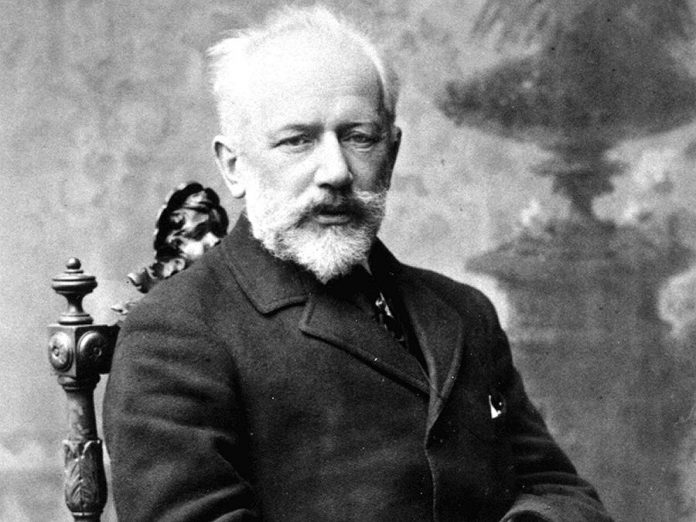
On Saturday, February 8th, the Peterborough Symphony Orchestra (PSO) presents “Winter Passion” at Showplace Performance Centre featuring works by Russian composers Pyotr Ilyich Tchaikovsky and Sergei Sergeievich Prokofiev and selections from Canadian composer John Burge.
Bringing passion and wonder to the winter chill is Tchaikovsky’s fate-filled Symphony No. 5 and Prokofiev’s imaginative Piano Concerto No. 1, performed by guest artist David Jalbert. Selections from Burge’s Four Seasons of the Canadian Flag acknowledge the season while looking to spring.
“Tchaikovsky’s Fifth Symphony is undoubtedly one of the greatest works from the Romantic era,” says PSO artistic director and conductor Michael Newnham.
“It is full of colour and emotion. Every bar of it contains meaning. This piece is like a diary, which brings us dangerously close to the most inner thoughts of the composer.”
Composed in 1888, the classic four-movement form is unified through a “motto theme” (pioneered by Berlioz in his Symphonie fantastique of 1830 where he introduces a melodic “idée fixe” — the object of fixation — as a representation of the artist’s obsession with his beloved).
For this recurring theme, Tchaikovsky chose a phrase from Mikhail Glinka’s 1836 tragic opera A Life for the Tsar, which accompanies the words “turn not into sorrow.”
The mood for the symphony is a sombre one, set by the motto the clarinet mournfully states in the extended slow and solemn introduction to the first movement. Perhaps it reflects the self-doubt Tchaikovsky experienced when he started composing the symphony, or perhaps a nod to the mysterious ‘xxx’ that appears in his notes on the work.

The movement proceeds in traditional sonata form with several themes in the exposition — notably, a jaunty march and a romantic “sigh” through violin and full orchestra — all found again in the development section.
However, rather than a robust restatement of the theme in the coda, the movement unexpectedly ends by disappearing into the lowest stretches of the orchestra, reflecting the mournful statement of the clarinet in the introduction. Submission before fate?
The second movement contains the famously beautiful horn solo, poignant and sensual. This second and the remaining movements passionately oscillate between the darkness of the idée fixe and lightness, found in a roller-coaster ride of spirited tempos, lyric flow, and influences of balletic elegance. A true struggle between fate and faith, ambivalent in its conclusion.
VIDEO: “Symphony No. 5” by Tchaikovsky
Although not greatly appreciated during Tchaikovsky’s own lifetime, this symphony later became known as one of the ‘great Fifth’ symphonies of all time, along those of Beethoven and Shostakovich.
David Jalbert, one of Canada’s most renowned pianists, returns to the PSO for a second virtuoso performance. Jalbert first performed with the PSO during the 2008-09 season and his attention to detail, combined with an infectious generosity of spirit, endeared him to both the orchestra and audience.
Jalbert joins the PSO for the second piece of the evening, Prokofiev’s ground-breaking Piano Concerto No. 1.
“The opening of this concerto sounds almost like something that a grand romantic composer, like Rachmaninov, might have composed at this time (1911),” Maestro Newnham observes. “But before you know it, all of this breaks into pieces through the energy and wit of the 20th century. It’s one of the shortest but most action-packed concertos that I know.”
Having composed his first piano piece at age five and his first opera (The Giant) at nine, Prokofiev entered the Saint Petersburg Conservatory at the age of 12 and proved himself an exceptional talented and exceptionally confident student.
Despite being several years younger than his peers, he was critical of the other students’ work. He also rejected the criticism of his own work by the conservatory’s director, Alexander Glazunov, all resulting in Prokofiev establishing a firm reputation as an “enfant terrible.”

Contributing solidly to this early reputation was Prokofiev’s first piano concerto, which elicited considerable critical discussion. Completed in 1911 while Prokofiev was still a student, Piano Concerto No. 1 is a daring, modernist-leaning work that defies convention in several ways.
Conceived of sonata form, it bears only a recognizable derivative of it. Prokofiev described it as “one sonata movement” containing three sections that run without pauses between.
Unusually, there are two concluding episodes in the first section. When the concerto then proceeds after a grand pause, it is not by the expected development section but by an entirely new theme, “a completely self-contained Andante dropped in, as it were, at this point.”
VIDEO: Prokofiev’s “The Young Juliet” performed by David Jalbert
Critics pronounced the concerto as “musical mud”, “the work of a madman”, and a “primitive cacophony”, with one critic suggesting that the audience chip in to “buy the poor fellow a straitjacket.” It was, however, these critical reactions that gained Prokofiev much attention (and notoriety) so early in his career.
The final performances of the “Winter Passion” concert will include two selections from John Burge’s Four Seasons of the Canadian Flag, which Burge conceived after seeing a photograph of Maxwell Newhouse’s canvas “Four Seasons of the Canadian Flag”.
“At the time I had been looking for an idea that could inspire a new composition that would recognize Canada’s 150th anniversary of Confederation,” Burge says. “It seemed immediately apparent that these four canvasses demanded a musical interpretation.”
“Certainly Vivaldi has done well with his four concertos modelled on the seasons. Max was in complete agreement with this idea and provided his blessing.”

Burge describes “Winter”, the first selection the PSO will be performing, as a movement of stark, dissonant contrasts that makes the most use of distinctive percussion colours. He describes the second selection, “Spring”, as an attempt to capture those moments when the earth starts to thaw.
Eventually the pent-up energy that has been frozen all winter is rejuvenated in a long build-up to a climax based on the opening French horn theme from the first movement.
“Spring” has an almost spiritual effect in the way the resurrection of nature can mirror the soul of the observer, and is a fitting end to the Peterborough Symphony Orchestra’s winter concert.
VIDEO: Burge’s “Four Seasons of the Canadian Flag” performed by NYO Canada
Concert tickets for “Winter Passion” are $49, $39, or $20 for adults, and $10 for students. Tickets are available at the Showplace box office (290 George St. N, Peterborough), by phone at 705-742-7469, or online at online.
Concert ticket holders are invited to attend “Meet the Maestro”, a popular ‘behind-the-music’ pre-concert talk with Maestro Newnham, at 6:40 p.m. in the Showplace theatre.


























